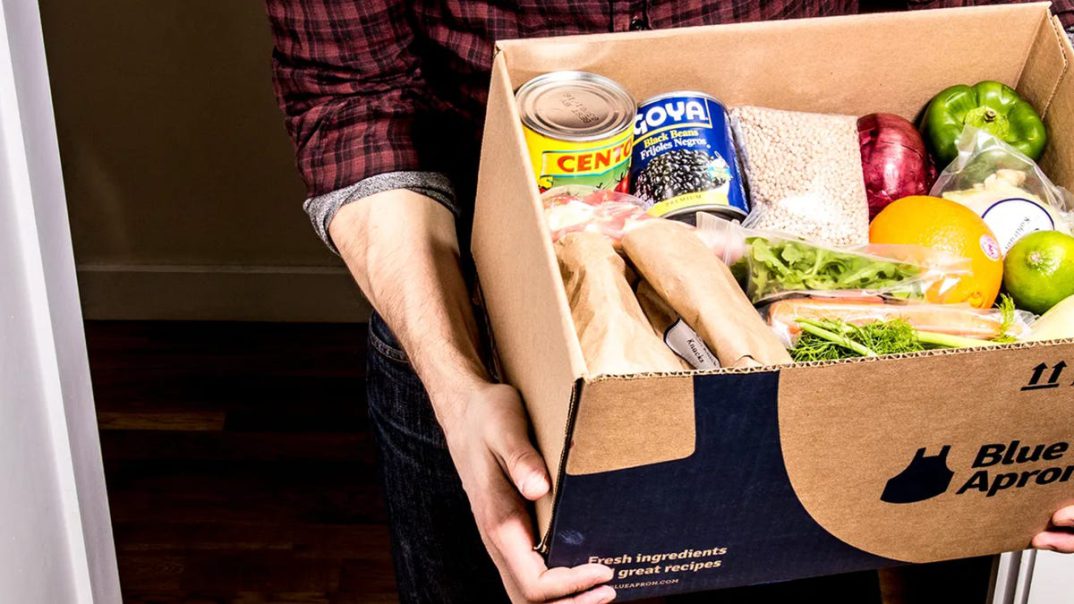Meal kits are both cheaper and easier to execute than ever. There are also more options making picking the right service difficult, so I’ve tested all of them — many three or four times — to find the best of the best. But picking the right meal kit is just half the story.
Once you’ve selected a meal delivery service, there are a few sly tricks, tips and hacks to get the most of your subscription. I’ve cooked my way through over 75 recipes, and in doing so, I’ve learned how to navigate a meal subscription to squeeze the most value out of Blue Apron, HelloFresh, Purple Carrot or Home Chef.
Whether it’s picking the right recipes for optimal value or knowing how to stretch or stretch your plan to feed the family all week, these are the best ways to get the most out of your next (or first) box of meal kit recipes.
1. Take advantage of multiple new customer deals
EveryPlate has laughably cheap sign-up offers to take advantage of. You can pause or cancel anytime.
First and foremost, you’ll want to take advantage of new customer sign-up offers. Most meal kit services allow you to try their goods for deep discounts, up to 70% off and often for several weeks’ worth of meals. I’ve rounded up the best meal delivery deals right now to help you pick.
If you’re already a meal kit subscriber, there’s no rule against pausing it or canceling so you can try another service at one of those dirt-cheap new customer rates.
2. Choose a bigger plan for better value
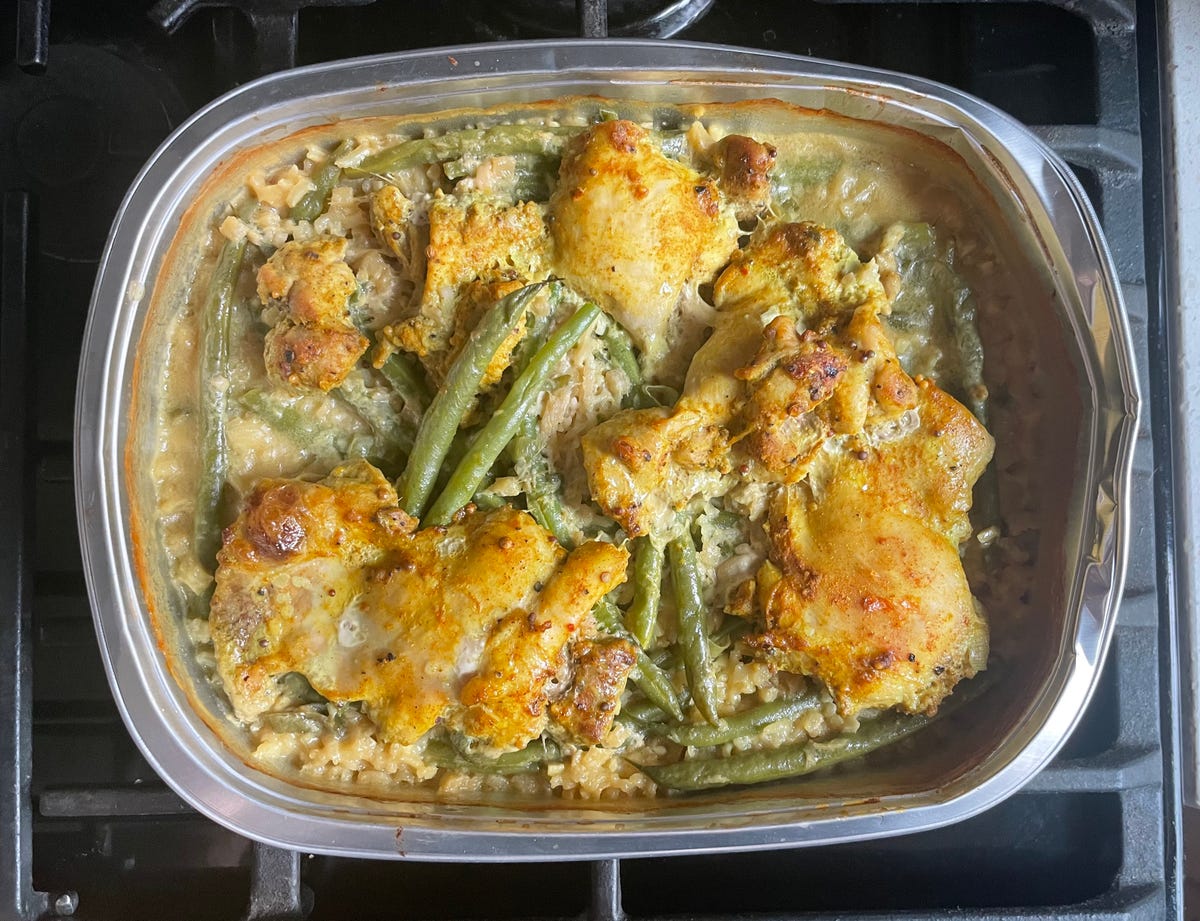
Go for the larger plan and you’ll have more food for a lower price per serving and tasty meals to last all week.
Meal kit costs vary greatly depending on the number of meals and servings you order per week, and the delta between them can be enormous. Blue Apron, for instance, breaks down to just $8 a serving if you order the most amount of meals — four recipes with four servings each — but jumps to over $12 per serving if you only get the least — two recipes with two servings per week.
My suggestion is to order a bigger meal plan than you think you’ll need and choose recipes that keep in the fridge or freeze well. Do this and you’ll have lunch and dinner all figured out for the next day or two. You’re already going through the effort to cook, you might as well get more miles out of it and save some money while you’re at it.
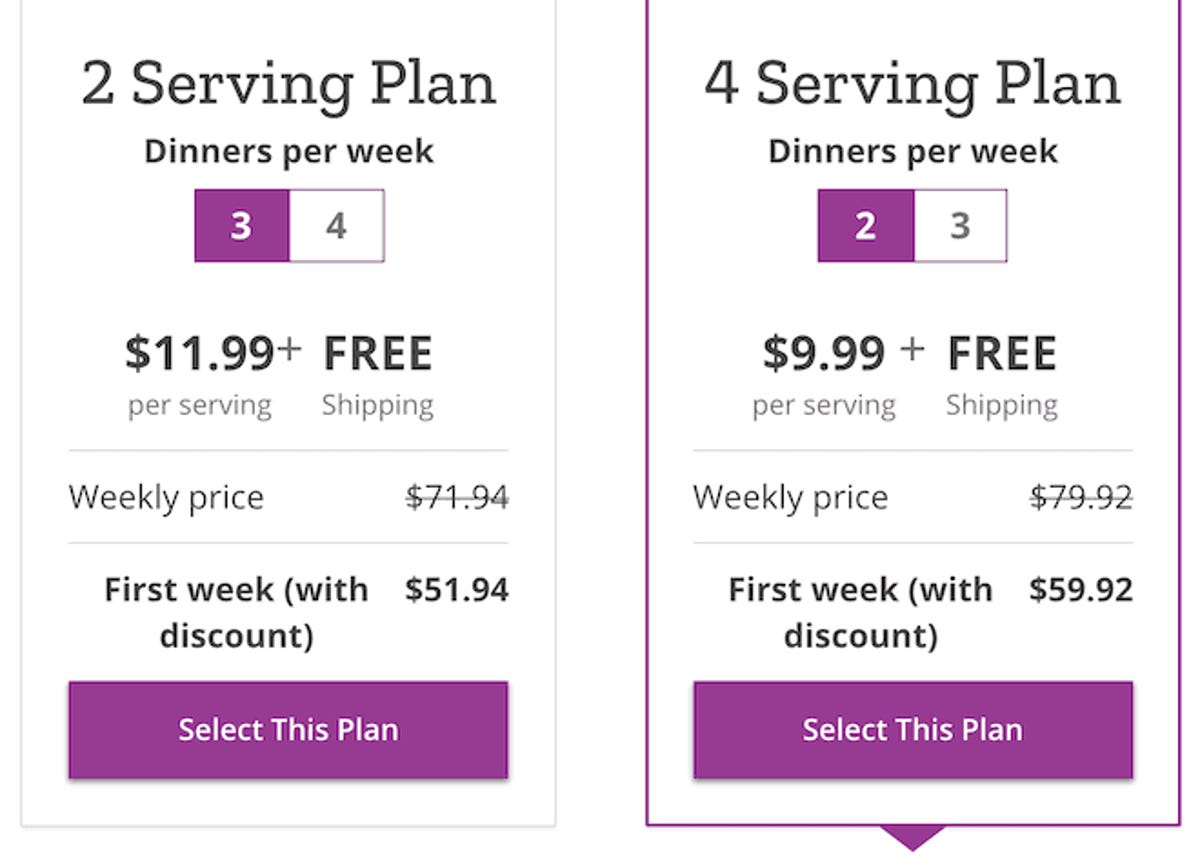
Purple Carrot pricing at a glance.
“Meal kit meal planning,” you heard it here first. What recipes are good for cooking in large batches and eating later on? Pretty much anything other than seafood and salad recipes, both of which aren’t great to freeze after preparing.
Speaking of which…
3. Always cook seafood recipes first

Always cook seafood recipes first. If you can’t get to it within a day, freeze the raw fish for later.
Seafood recipes are always best to cook first since they’ll also spoil first. The same goes for other recipes with ingredients that may turn when left uneaten or uncooked, including vegetables, leafy greens, cheese and fresh dairy.
Potatoes and other dense vegetables are typically good between four or five days to a full week. Steak and chicken are also pretty hearty and can last several days in the fridge without having their quality compromised.
4. Take advantage of steak and seafood recipes
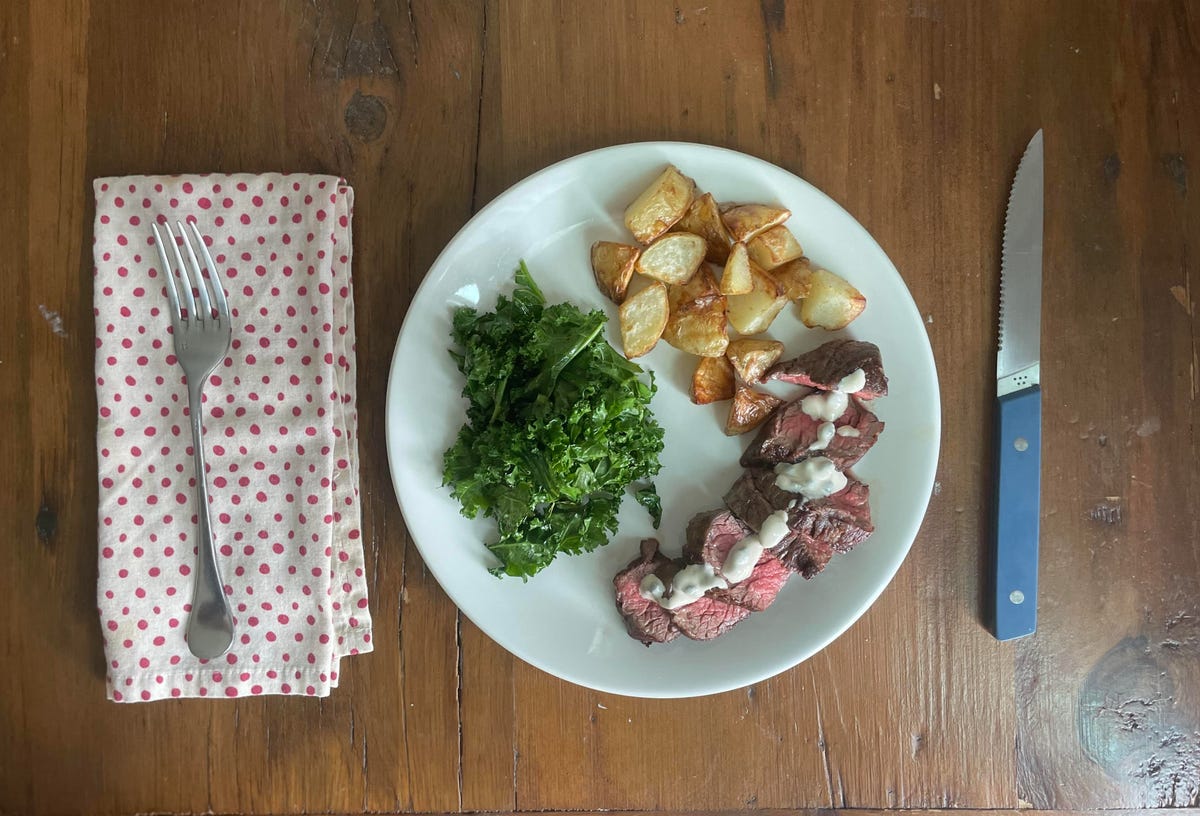
Blue Apron’s steak recipes are included in the basic meal plan.
When you peruse a weekly meal kit menu, you’ll typically have a dozen or so recipes to choose from, sometimes as many as 50 or more. While you should certainly choose recipes that sound good to you and fit your nutrition goals, some recipes will give you more for your money. Steak and seafood recipes are at the top of that list, but anything with a protein (chicken, pork, fish) is typically a better deal.
I priced out a few recipes from Blue Apron and EveryPlate to see how much they cost versus buying all the ingredients yourself. Unsurprisingly, the most expensive recipes to make from scratch (i.e. the best deals for a meal kit subscriber) were those featuring steak and seafood. Some meal kit services charge a premium for certain recipes, but many include steak, shrimp, salmon and other seafood as part of the standard plan.
On the flip side, avoid recipes with ingredients that are cheap and easy to find at the store, such as simple pasta dishes with no protein or basic soups. If you eat mostly vegetarian, I recommend Purple Carrot, since this 100% plant-based meal kit service has the most interesting meat-free recipes made with high-quality ingredients.
5. Don’t always trust the recipe, especially with spices and heat
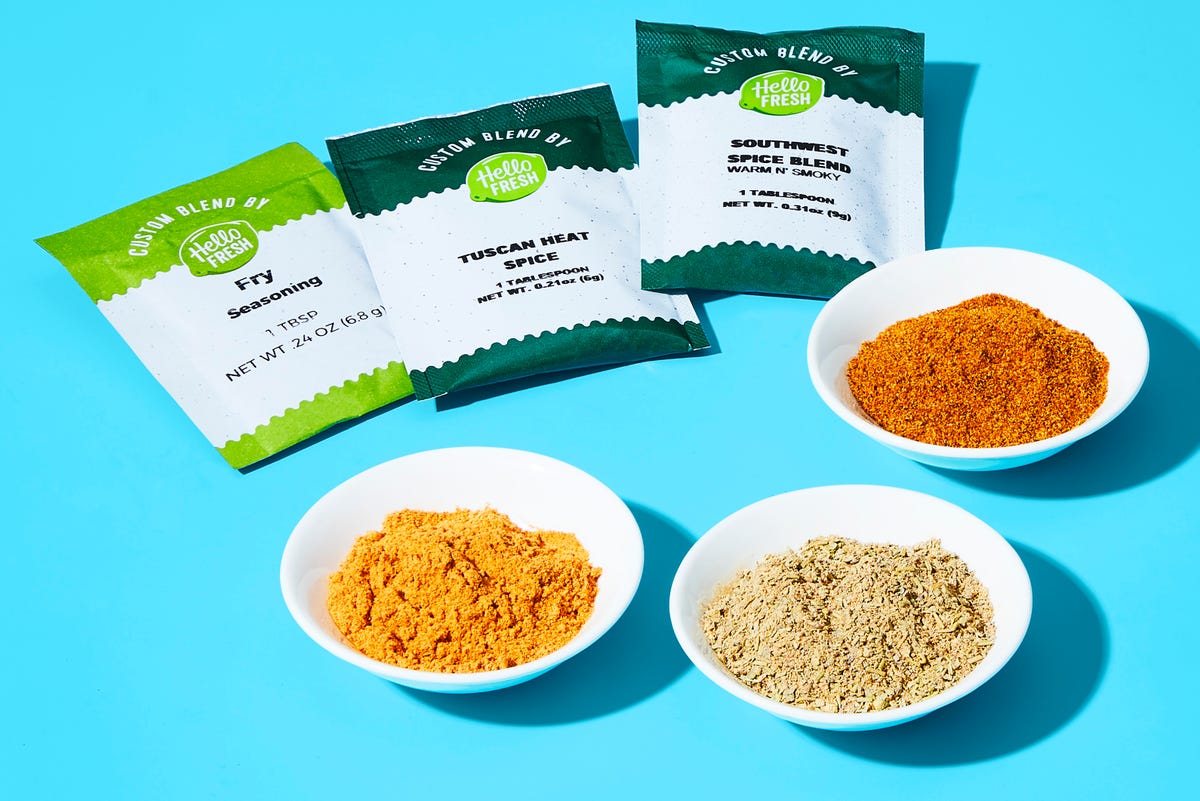
Trust your instinct and err on the side of less when it comes to adding salt and spices. You can always put more in but you can’t take it out.
Recipes are not one size fits all, so trust your instincts. If it seems the recipe calls for what seems like too much salt going into the sauce, it probably is. You can always add more, but you can’t take any out, so err on the side of caution. The same goes for heat and spice: If you can’t handle big hits of habanero or spicy curries, pull back on those elements until you’ve tasted the finished dish.
6. Pay attention to the ‘customer favorite’ tags
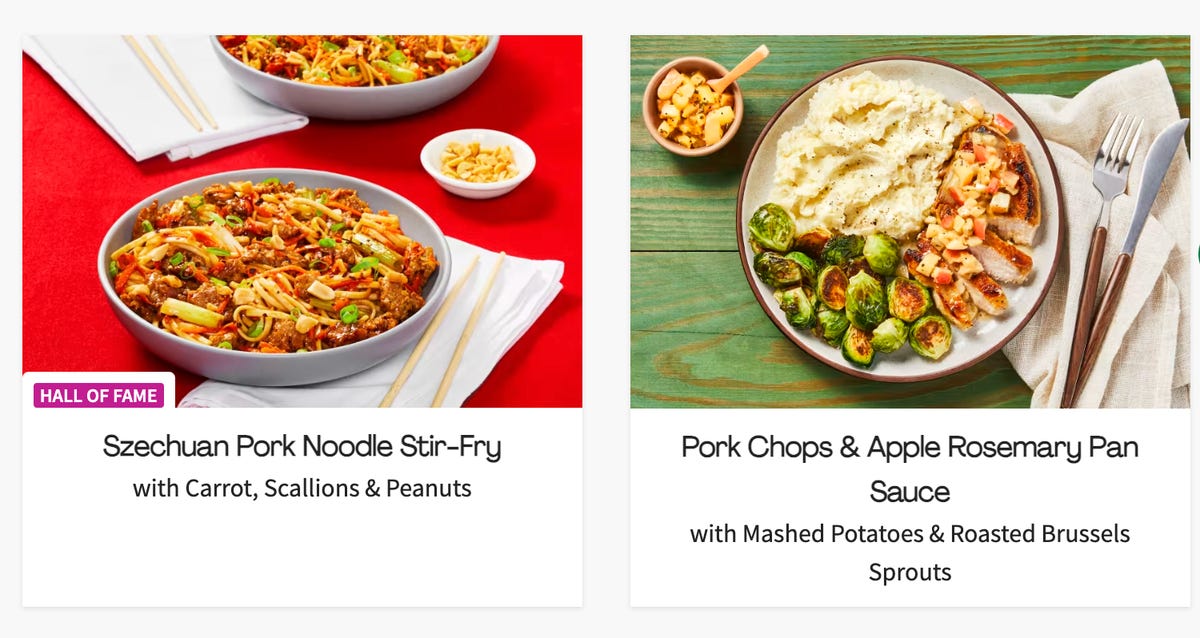
Certain recipes get slapped with a customer favorite badge and there’s usually a reason why.
Most meal kit companies will hit certain recipes with a “fan favorite” label. More often than not, I’ve enjoyed those dishes and appreciate the recommendation. Services such as HelloFresh and Home Chef use loads of aggregated user reviews and subscriber feedback, so you can trust there is some validity to those markers. Hey, they want you to enjoy the meals just as much as you do.
7. Challenge yourself and have fun
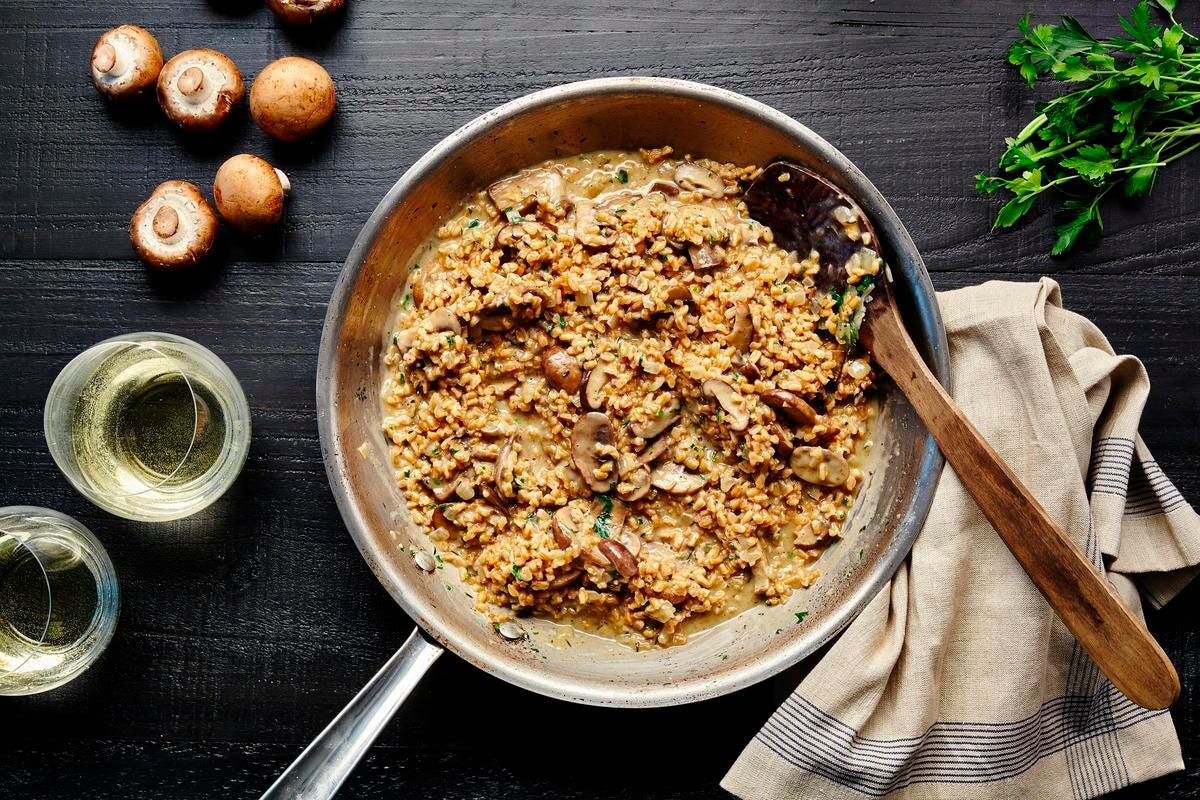
Meal kits can help you become a better cook, so lean into it!
It’s true: Meal kits are a good way to get you and the family fed for a fair price, but they can also be a lot of fun and a good way to sharpen your cooking skills. Never made risotto before? Pounce on those recipes when it comes along on the menu. You might be surprised at how easy it is.
When you crack open a meal kit, crack open a bottle of wine too or pour yourself a beer, cocktail or mocktail and put on some music or a favorite podcast. Cooking can be calming if you’re in the right headspace. If you’re not in the right headspace, make the kids cook.
Bon appétit.

